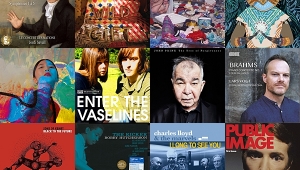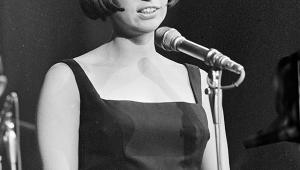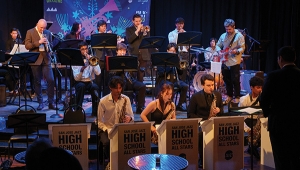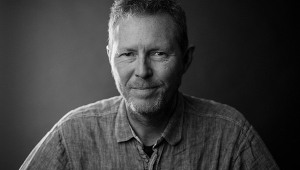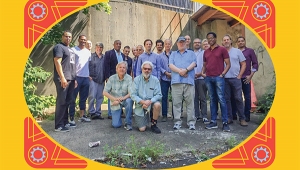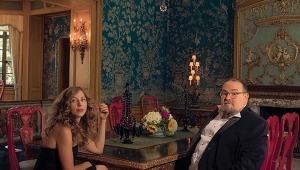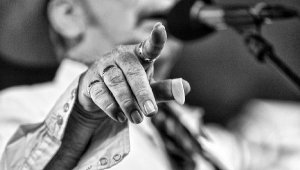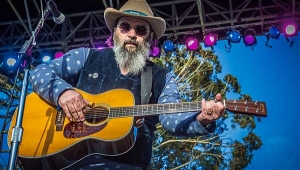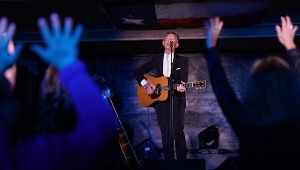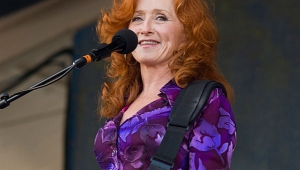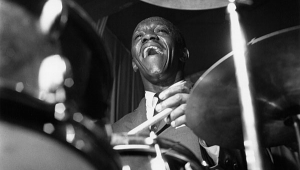| Columns Retired Columns & Blogs |
Ludwig van Beethoven's 32 Piano Sonatas Page 2
Gremlins & Formats
So we had an agreement. Once Bob and Jim had prepared the masters for all 32 sonatas, I would drive out with my recording gear to the Maestro Foundation's recital hall in Santa Monica. Bob would bite his nails, Jim would feed the Bösendorfer's control PC with floppies, I would feed my Nagra and Tascam recorders with tape, and, other than retakes to cover takes spoiled by that bane of classical location recording, traffic and airplane noise, we would capture all of Beethoven's piano masterpieces in as best a sound quality as I could manage in as short a time as practicable.
Footnote 2: Just to cover all the current recorded bases, MP3-encoded excerpts from some of the sonatas can be downloaded from Robert Silverman's pages on MP3.com.
So we had an agreement. Once Bob and Jim had prepared the masters for all 32 sonatas, I would drive out with my recording gear to the Maestro Foundation's recital hall in Santa Monica. Bob would bite his nails, Jim would feed the Bösendorfer's control PC with floppies, I would feed my Nagra and Tascam recorders with tape, and, other than retakes to cover takes spoiled by that bane of classical location recording, traffic and airplane noise, we would capture all of Beethoven's piano masterpieces in as best a sound quality as I could manage in as short a time as practicable.
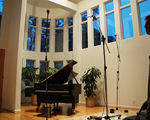 And—joy of joys for anyone who records the piano—we would have a skilled technician, Mike Kemper, available. Not only could Mike keep the big Bösendorfer in tune between takes, despite the pounding it was going to take—the "Hammerklavier" sonata is appropriately named—but he could work on the playback mechanism. My years of recording have made me a true believer in Murphy's Law: "If anything can go wrong, it will—especially if you don't have a technician standing by." The mere fact that Mike would be patiently sitting at the piano's side would keep the gremlins at bay. And other than a few adjustments that were occasionally needed, it did.
And—joy of joys for anyone who records the piano—we would have a skilled technician, Mike Kemper, available. Not only could Mike keep the big Bösendorfer in tune between takes, despite the pounding it was going to take—the "Hammerklavier" sonata is appropriately named—but he could work on the playback mechanism. My years of recording have made me a true believer in Murphy's Law: "If anything can go wrong, it will—especially if you don't have a technician standing by." The mere fact that Mike would be patiently sitting at the piano's side would keep the gremlins at bay. And other than a few adjustments that were occasionally needed, it did.
The primary question I had to face before the sessions was: What kind of sound did I want to capture? Classical recording is in a state of flux engendered by the advent of DVD-Audio and/or SACD, which offer both higher resolution than CD and full surround capability. But the commercial reality is that it is still the two-channel CD that will earn back a record company's investment.
I had plenty of microphones available—recording engineers collect microphones like car windshields collect bugs—and up to 12 clock-linked channels of 44.1kHz-sampled data storage. If we could live with 16-bit resolution and a 44.1kHz sample rate, I could record the piano in full 6-channel surround and separately in stereo for the CD release. However, if I doubled the sample rate and increased the word depth to 24 bits to take full advantage of the potential for high resolution offered by DVD-A or SACD, I would be restricted to four channels. This might just be enough for a convincing surround-sound presentation but would produce too dry a balance for straight stereo playback on the CD. (I had experimented with recording surround tracks for Stereophile's Rhapsody, Duet, and Encore CDs, but the front mike arrangement for convincing two-channel playback invariably sounded too "wet," too reverberant, when the rear channels were added.) Or I could go for broke and record just two channels at 24 bits and a 192kHz sample rate.
In true procrastinating fashion, I decided to put off the final decision until I heard the piano in the hall. As long as I took enough equipment and tape with me to Santa Monica for every eventuality, I would be covered, both for CD and eventual DVD-A or SACD release (footnote 2).
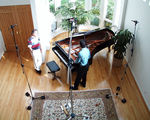 Back home in Santa Fe after the sessions, I would use my Sonic Solutions digital audio workstation to prepare the CD masters, and the 10-CD set would be released on the Canadian OrpheumMasters label, run by Vancouver record retailer David Lemon. (One of Canada's foremost spokespeople for the arts, Lemon has commissioned a full-length choral work, based on the Book of Job, from contemporary British composer Peter Maxwell Davies.)
Back home in Santa Fe after the sessions, I would use my Sonic Solutions digital audio workstation to prepare the CD masters, and the 10-CD set would be released on the Canadian OrpheumMasters label, run by Vancouver record retailer David Lemon. (One of Canada's foremost spokespeople for the arts, Lemon has commissioned a full-length choral work, based on the Book of Job, from contemporary British composer Peter Maxwell Davies.)
"I Can't Move the Piano?"
I had arrived at the Maestro Foundation's recital hall just after lunch—plenty of time to set up before we could roll tape after the early-evening rush hour. The magnificent-looking concert grand, with only a deep tray beneath its keyboard betraying its unusual nature, was sitting at one end of the 20' by 50', two-storey room, very close to the wall on one side and to the bay window behind it. I asked Bob to set it playing.
Hmmm...The live sound was bright, the balance thrilling, but early reflections from the nearby boundaries were very obvious. While the hall was quite deep, a balcony quite close to the performing area restricted how far back I could get with my mikes. But I figured that if I could move the piano even 6' farther out in the room, the early reflections would be sufficiently tamed to allow the room sound to develop unhindered.
"You can't move the piano."
I gaped at Jim Turner.
"Aaron is adamant. We have to leave the piano undisturbed. In addition, the PC is situated in the basement immediately beneath the piano and the control leads are only just long enough. But it's not as bad as you might think. NPR has recorded a number of concerts here for broadcast, and Reference Recordings' Keith Johnson also recorded Dick Hyman here [for In Recital, Reference RR-84CD]. They both found mike positions that worked well without the piano being moved."
Footnote 2: Just to cover all the current recorded bases, MP3-encoded excerpts from some of the sonatas can be downloaded from Robert Silverman's pages on MP3.com.
- Log in or register to post comments
